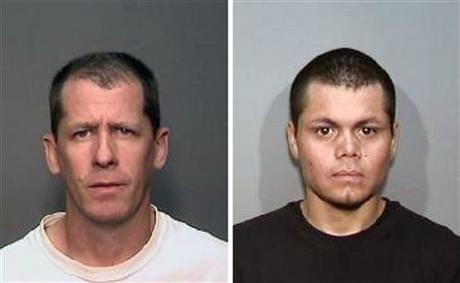
By GILLIAN FLACCUS and AMY TAXIN
Late at night, the two convicted sex offenders exchanged text messages debating whether to kill their next victim or spare the life of the pretty, young woman they had picked up just hours before.
“I thought the next one, you were going to go at it,” read the message that popped up on Steven Gordon’s cellphone, according to testimony from a custodian of mobile phone records before a Southern California grand jury.
“I can’t,” read the reply from a phone authorities say was being used by co-defendant Franc Cano. “Cat is beautiful.”
The messages are part of an at-times harrowing read of a recently unsealed 335-page transcript of grand jury proceedings held to indict Cano, 28, and Gordon, 45, on four counts of special circumstances murder and rape in the deaths of four women during a months-long killing spree. Only one of the victims’ bodies was found.
The transcript provides a close-up look at how police pieced together evidence to pin the disappearance last fall of three women with a history of prostitution and the discovery of a dead woman’s body at a trash sorting facility months later and miles away on two homeless sex offenders wearing electronic monitoring devices when the killings occurred.
It also offers an in-depth account of the crimes by an Anaheim police detective who says Gordon confessed to killing the women during a 13 ½ hour interview after his arrest in April.
Starting in October 2013, Gordon would pick up the women in his car while Cano hid in the back seat and then overpowered him when they got in. The two took the women behind an Anaheim paint and body shop where Gordon and Cano camped out and raped them, Det. Julissa Trapp told the grand jury.
Cano strangled the women and Gordon punched them in the stomach “to get the air out faster,” she said. At one point, he grew enraged when one of the victims noticed his electronic anklet, she said.
“He ultimately made a statement that once he started, he couldn’t stop,” Trapp said.
The grand jury returned four rape and murder indictments against Gordon and Cano. A fifth victim described by Gordon has never been identified.
The men both pleaded not guilty. Cano’s attorney, Houman Fakhimi, and Gordon’s attorney, Denise Gragg, did not return calls and emails.
Gordon told Trapp that he didn’t want to kill the last woman, 21-year-old Jarrae Nykkole Estepp, because she was beautiful, but when she refused to stay, he decided that she had to die, too.
Estepp’s naked body was found on a conveyor belt at a recycling plant — a discovery that would lead police to link her death to the missing women and ultimately help investigators solve all four cases.
A fingerprint lifted from a caulking tube found in trash near Estepp’s body led investigators to a window installer who worked in the industrial area where authorities say the suspects disposed of their victims in a trash bin.
Detectives then searched a database of sex offenders wearing tracking devices and found that Cano had been at the locations where all four women disappeared at the times they vanished and also near the bin.
They collected Cano’s DNA from a water bottle and discarded gum and honed in on Gordon as a second suspect after a search of Cano’s cellphone records showed he texted with Gordon constantly.
DNA samples from Estepp’s body matched Cano and Gordon’s genetic material.
Police believe Cano and Gordon have known each other since at least 2010, when Cano cut off his GPS device and fled to Alabama, where he was arrested with Gordon.
Two years later, in 2012, they again snipped off their monitoring devices and boarded a Greyhound bus to Las Vegas using fake names before being arrested two weeks later by federal agents.
Cano and Gordon were registered sex offenders after being convicted in separate cases of lewd and lascivious acts with a child under 14. Gordon was convicted in 1992 and also has a 2002 kidnapping conviction, while Cano’s conviction dates back to 2008.
Police searched extensively for the other victims’ bodies at landfills but never found them.



